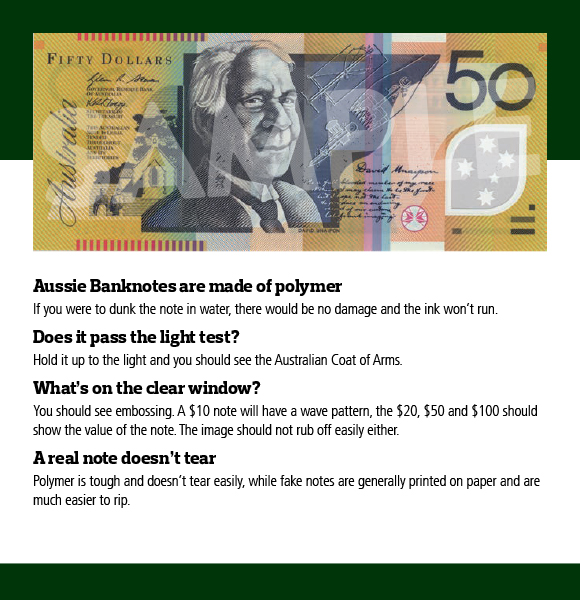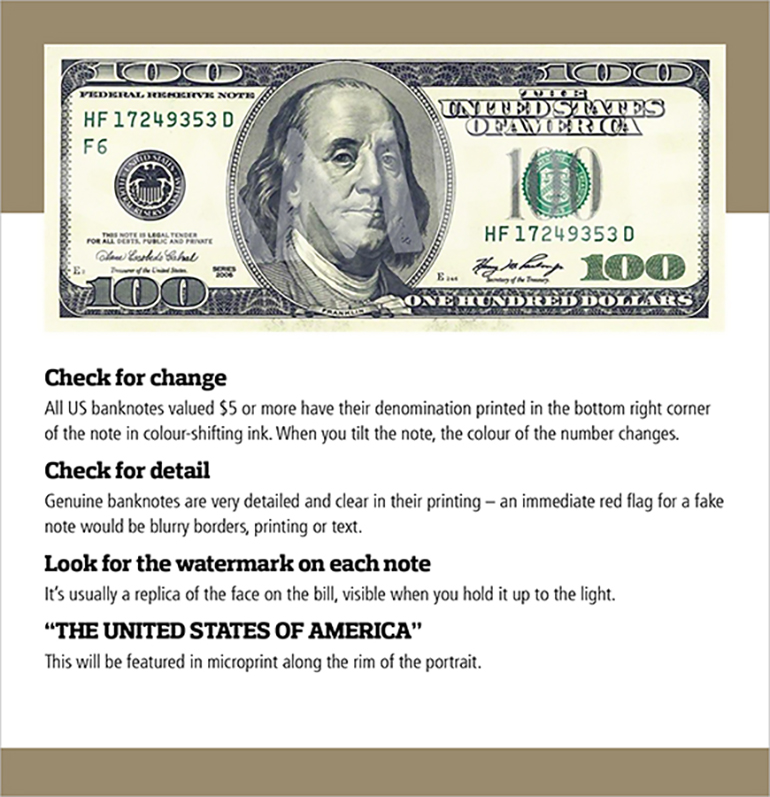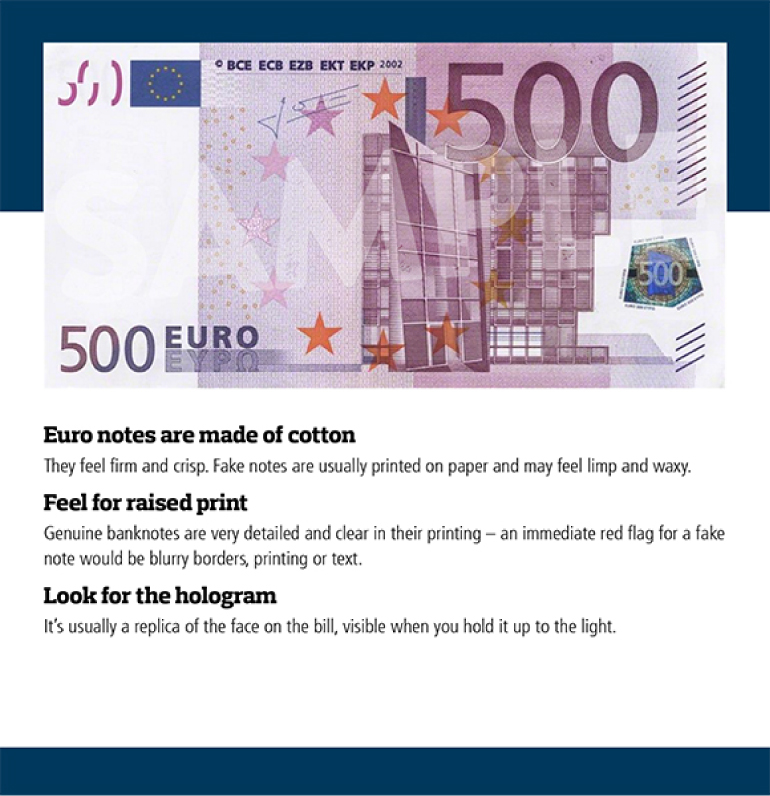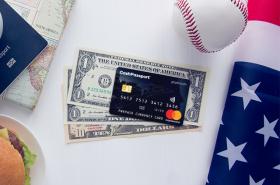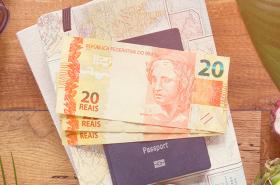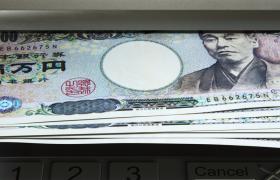Quick Contact

22nd June 2017
Did you know that the Secret Service was established by President Abraham Lincoln to fight currency counterfeiting problem during the Civil War?
While counterfeit money might not be as big a problem now as it was back during the Civil War, it is still a problem - more so in some countries than in others. Unfortunately, from time to time, the counterfeit problem of other countries might affect you - specifically when you're travelling and need to exchange your Kiwi dollars for the currency of another country.
The last thing you want is to land up with a heap of worthless banknotes when you do your foreign exchange, or get duped by a dodgy merchant with fake change. So, we think it's important for you to know some of the key security features to look for so you can spot a fake banknote.
Each currency has its own security features, so we could be here all day outlining them. Instead we have focused on some of the holiday destinations we Kiwis love to travel to.
How to spot a fake Australian banknote
All Australian banknotes have the same security features, so you can look for any of these on any of the denominations.
How to spot a fake US banknote
There are a number of security features included in US dollar banknotes, some only visible with UV lights or magnifying glasses. Here are a few you can check quite easily.
How to spot a fake Euro banknote
Each of the Euro banknote denominations have a different colour and image, but they do share common security features to help you tell a fake note from a real one,
How to spot a fake British banknote
The UK currently has paper banknotes, and some new polymer notes in circulation. They do share some security features, but many are unique to the different types of banknotes.
On both the paper and the polymer notes:
- The printed lines should be sharp, clear and free of smudges
- You should be able to feel some raised print on the notes, across where it says "Bank of England"
- On real banknotes, there is microprint under the portrait of the Queen - it should have the value of the note in both letters and in numbers, which you can read with a magnifying glass.
On the paper notes, you should be able to see a metallic thread embedded into the paper - when you hold a real pound note up to the light, this should then appear as one continuous dark line.
The new polymer notes have a foil patch on them - when you tilt the note, the words should change. For example, on the £5 note, it changes from the word "Five" to "Pound".
Counterfeiters can often duplicate one or two of the security features of the different banknotes, but very rarely can they duplicate all of them. For this reason, you should try to check a few of them rather than just one or two. And, it will help to compare the suspect note against one that you know is genuine.
If any fake notes do accidentally make their way into your possession, you should report it to the Police as soon as possible. We recommend not handling the money more than you need to; just put it in an envelope for the authorities and try not to touch it again.
Make a note of how the notes came to be in your possession, and pass it all over to the Police (or Secret Service).
Travel Money Oz are the FXperts and are ready to help you take off with more travel money. Discover our foreign currency exchange rates today.
Currency and Counterfeiting statistics and information taken from the website of the Reserve Bank of Australia: https://www.rba.gov.au/publications/bulletin/2017/mar/8.html and http://banknotes.rba.gov.au/assets/pdf/counterfeit-detection-guide.pdf
This blog is provided for information only and does not take into consideration your objectives, financial situation or needs. You should consider whether the information and suggestions contained in any blog entry are appropriate for you, having regard to your own objectives, financial situation and needs. While we take reasonable care in providing the blog, we give no warranties or representations that it is complete or accurate, or is appropriate for you. We are not liable for any loss caused, whether due to negligence or otherwise, arising from use of, or reliance on, the information and/or suggestions contained in this blog.
